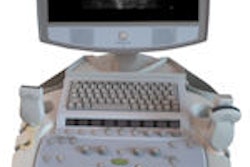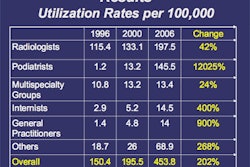In vascular ultrasound labs, it's critical not to focus singularly on the job of scanning patients. It's also important to please those patients, according to a New York City hospital that has changed its focus from getting patients scanned to making patients happy.
Montefiore Medical Center in New York City launched an initiative several years ago to improve its customer service, and along the way discovered that many of the truisms it had assumed about customer service weren't true at all, according to George Berdejo, director of vascular ultrasound services at Montefiore.
"What we have figured out is that 'done' and 'happy' are not the same things," he said. "You may be getting the job done, but you may not necessarily be making the patient happy."
Berdejo discussed the need to ensure customer satisfaction during a talk at the Leading Edge in Diagnostic Ultrasound conference, held in May in Atlantic City, NJ.
Several years ago, Montefiore decided it needed new ways of thinking about the service it was providing and new ways of providing service, he said. So the hospital adopted a strategy of service excellence, which is a commitment by staff to try to consistently meet and exceed expectations from patients and other customers, Berdejo said.
Customer satisfaction is a business term that's used to measure how satisfied an enterprise's customers are with the organization's efforts in a marketplace.
"When you have a bad experience in the business world, you're likely to tell not just one person, but 10, 15, 20 people," he said. "We see that in all areas of business, and we see it in healthcare, too."
Organizations need to worry about customer satisfaction, as they are interested in retaining existing customers and increasing the number of new customers, Berdejo said. "When you don't meet customer expectations, service failure occurs," he said.
When customer complaints arise, it presents an opportunity for service recovery, which involves taking a specific, meaningful action that will lead disappointed customers back to a state of satisfaction, he said. Patients who are "recovered" in this manner can become more loyal customers than those who may have never had a problem, Berdejo said.
Knowing the right way to apologize is important in the service recovery process, Berdejo said.
" 'I'm sorry it happened to you' and 'I'm sorry you experienced' are some of the key phrases we use during service recovery," he said. "Saying I'm sorry doesn't mean that you did something wrong, it just means that you're feeling for the patient because they're experiencing a negative situation. All you have to do is say, 'I'm here to fix whatever broke down.' "
Part of the process, therefore, is to fix the person, rather than the problem, Berdejo said.
Service fundamentals
Montefiore uses an acronym called AIDET -- Acknowledge and apologize; Introduce yourself and intervene; Do what it takes to make it right; Explain with empathy and exceed patients' expectations; and Thank the patient, according to Berdejo.
The worst possible scenario is for a patient to experience a service failure and have no one acknowledge the perceived failure, Berdejo said.
"Apologize to the patient, and then accept accountability," he said. "You don't have to accept blame, but somebody has to accept accountability to get that patient back to a state of satisfaction. It doesn't matter who's at fault or what the issue is. Patients want someone to acknowledge that a problem occurred and to show concern for their disappointment."
It's also important to thank the customer for the opportunity to help him or her, Berdejo said. A token gift may also be indicated, commensurate with the level of the act that caused the service failure.
Good service yields a number of positive effects, including the ability to prevent escalation or litigation, building of trust, and empowerment and satisfaction of associates, he said.
"The bottom line is that it increases patient satisfaction," he said. "Service recovery is taking action immediately after a problem is identified, it's performing thoughtful and positive direct actions, it's making right what went wrong, it's apologizing and meaning it, it's healing a customer's feelings, it's getting a customer back to a state where expectations can be met again."
By Erik L. Ridley
AuntMinnie.com staff writer
July 22, 2009
Related Reading
B-mode US shines in measuring carotid atherosclerosis, September 19, 2008
Vascular ultrasound QA requires consistency, validation, August 4, 2008
Ultrasound quality strongly affects ovarian cancer management, January 21, 2008
Copyright © 2009 AuntMinnie.com



















